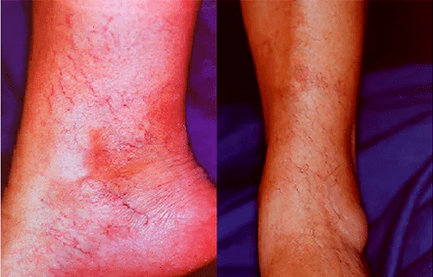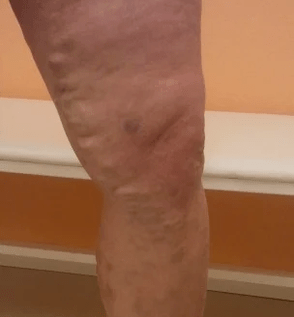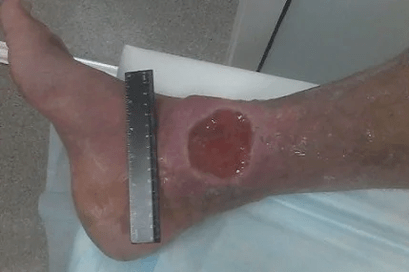
Varicose veins - This is the extension of subcutaneous veins with a diameter of more than 3 mm.Varicose veins are developed due to the reduced function of venous valves and the weakness of the venous wall.At the same time, the outflow of blood from the lower extremities, the increase in pressure in the vein, which can lead to chronic venous insufficiency.
Sometimes, Telanggiectasia and network veins are incorrect for the yellow-open.
These are veins with diameter 3 mm and less, they do not affect the venous outflow, but they cause a clear cosmetic defect.
What is the prevalence of varicose veins?
Expansion of subcutaneous veins is available to 30 % of women and 15 % of men.The prevalence of varicose veins of the lower extremities increases significantly with age and exists in most people over 60 years of age.At the same time, every fifth patient in life has thrombophlebitis.Among the reasons that lead to disability, the share of the forms with the disabled vein needs is more than arteries.
The main risk factors for the development of varicose veins are:
- elderly age
- Female sex
- pregnancy
- Hormonal disorders
- Positive Family History
Additional risk factors:
- smoking
- Arterial hypertension
- constipation
The literature on additional risk factors is contradictory.In addition, the risk of developing venous disease is low.
How do varicose veins occur?

The most common manifestation is uneven dilated veins protruding above the surface.In some cases, they can be minimally notable or determined only by the touch, in others they take a form of clearing with nodes formation or look like a large grape.
Often varicose veins are accompanied by the following symptoms:
- Feeling and intensity in the legs
- Pain and/or pain along the veins
- Rapid fatigue of the legs
- Itching of the skin of the legs
Rarely can varicose vein disease cause anxious legs syndrome and night foot cramps.
What are the risks of the evolution of varicose veins?
In the absence of treatment, the evolution of vein varicose veins can lead to chronic venous insufficiency (CVN).The presence of HVN indicates serious violations of venous lymphatic (C3-C6 CEAP Class Category Class), which include: chronic edema (lymphadem), skin color change (over-coloring), venous eczema, skin coincidence, venous vein.
What are the complications of varicose veins?
Thrombophlebitis-the formation of a thrombus in a venous surface system is a fact that treats 20% of varicose patients.This thrombosis is accompanied by severe pain, redness of the skin, sealing along the vein on the lower leg and/or thigh.In the absence of treatment, thrombotic masses are possible in a deep venous system.

Deep vein thrombosis (TGV) - In most cases, the principle of the process is asymptomatic.When thrombosis spreads to the femur and vein of the pelvis, the main blood outflow from the lower extremities is disturbed, which is accompanied by severe edema and pain syndrome and is considered as a state of religion.
Hydrofolism of the Pulmonary Arteries (Tela) - In 10% of cases, thrombotic masses in deep lower extremity veins are fragmented and migrated to the pulmonary arteries with blood flow, causing deaths.
What is needed for the right diagnosis?
Given the variety of forms of veins, every detail of the history of patient development and life, the presence of simultaneous diseases is important for proper diagnosis.The latter, today, is the most information accurate and non -invasive method of studying the veins of the lower extremities.
Treatment with varicose veins, the most common methods:
- Drug therapy-inflammatory drugs have proven their effectiveness in reducing the symptoms of vein varicose veins, but are not able to eliminate varicose veins on their own.Pharmacotherapy is used successfully to prevent complications in risk groups, preoperative preparation and postoperative rehabilitation.
- Compression treatment - Wearing special medical knitwear in the form of golf, storage, tights.In some cases, multi -levels are used with elastic bandages of various extensions and compression pneumo material.The role of compression therapy is difficult to overestimate, there is almost every stage of the prevention and treatment of chronic veins.
- Introduction to the drug veins that can cause it to be closed.This method is a gold standard for the elimination of network veins.It is successfully used in the treatment of veins of veins that do not have a large diameter and has restrictions on the elimination of the abnormal blood flow of the main subcutaneous veins.
- Classic function - Combined venousness in modern efficiency is performed on an external base under vertebral or local anesthesia.In some cases, this is the only feasible way when the target veins are very convincing and/or have high extensions.However, the method is inferior to brain traumatic processes.
- Endo venous laser prison - A method for the treatment of varicose veins, in which the vein is not removed, but is closed from the interior with the energy of laser radiation, which is transferred directly to the wholesale container with fibers.The effectiveness of the procedure is comparable to the results of the vein removal, at the same time, is characterized by minimal trauma.Recovery time is 1-3 days.
- Jail - A progressive way to eliminate the abnormal blood flow of the veins of the trunk.It is a completely external process performed under local anesthesia.The efficacy of treatment corresponds to the level of classical venous venous, pain syndrome is minimal or absent.Recovery time is 1-2 days.














































